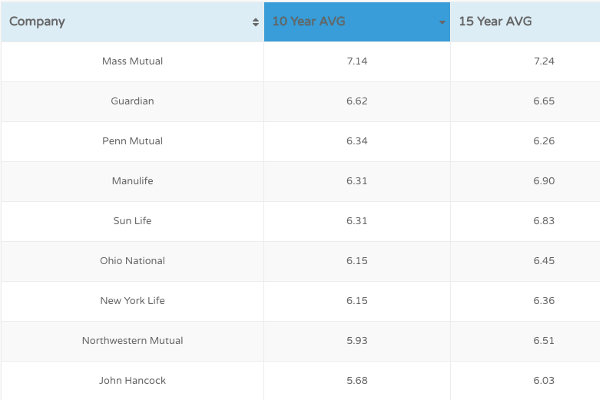When it comes to protecting your family's financial future, whole life insurance is a popular choice. Not only does it provide a guaranteed death benefit, but it also offers a cash value component that can grow over time. However, not all whole life insurance policies are created equal, especially when it comes to cash value accumulation. To ensure you make an informed decision, it's essential to consider several factors when selecting the best whole life insurance policy for cash value. In this blog post, we will explore these factors in detail, empowering you to make a wise and informed choice.
Click below to get a Quote Now
Get Me A Quote
Click below to get a Quote Now
Get Me A Quote
Understand Cash Value Growth
Cash value is a key feature of whole life insurance policies, as it provides a savings component that can be accessed during your lifetime. It's important to understand how cash value accumulates and grows within a policy. Different insurance companies may have varied approaches to cash value growth, including the use of dividends, interest crediting rates, and investment options. Research and compare the cash value growth potential offered by different companies to ensure you select a policy that aligns with your financial goals.Evaluate Dividend Options
Dividends are a unique feature of participating whole life insurance policies. These dividends represent a portion of the insurance company's profits and can be used to enhance the policy's cash value. When evaluating policies, consider the dividend options available. Some policies offer the choice of receiving dividends as cash, using them to purchase additional coverage, or accumulating them to increase the policy's cash value. Understanding the dividend options can help you optimize the growth of your policy's cash value.Compare Cost and Premium Structure
The cost of whole life insurance can vary significantly between insurance companies and policies. It's important to compare the cost and premium structure of different policies to ensure they align with your budget and financial capabilities. Take into account factors such as the initial premium, premium payment duration, and any potential increases over time. Balancing the affordability of premiums with the desired cash value growth is crucial in selecting the best policy for your needs.Unlock wealth with the right whole life insurance!
Click below to get a Quote Now
Get Me A Quote
Assess Company Strength and Ratings
When choosing a whole life insurance policy, it's essential to consider the financial strength and ratings of the insurance company. A financially stable company is more likely to fulfill its obligations and provide reliable cash value growth over the long term. Research independent rating agencies' assessments of insurance companies to gain insight into their financial stability and claims-paying ability. Opting for a reputable and financially secure company can give you peace of mind about the policy's cash value growth potential.Seek Professional Guidance
Navigating the complex landscape of whole life insurance can be overwhelming. Seeking guidance from a knowledgeable and trustworthy insurance professional can help you make an informed decision. An experienced agent can explain the nuances of different policies, analyze your financial goals, and recommend the best whole life insurance options for cash value accumulation. Their expertise can ensure you select a policy that aligns with your specific needs and maximizes your cash value growth potential.Conclusion
Selecting the best whole life insurance policy for cash value requires careful consideration of several factors. Understanding how cash value grows, evaluating dividend options, comparing costs and premium structures, assessing company strength, and seeking professional guidance are all crucial steps in making an informed decision. By taking the time to research and analyze these factors, you can choose a policy that not only provides financial protection for your loved ones but also offers the potential for significant cash value growth over time. Remember, selecting the right whole life insurance policy is an investment in your family's future financial security.Unlock wealth with the right whole life insurance!
Click below to get a Quote Now
Get Me A Quote




